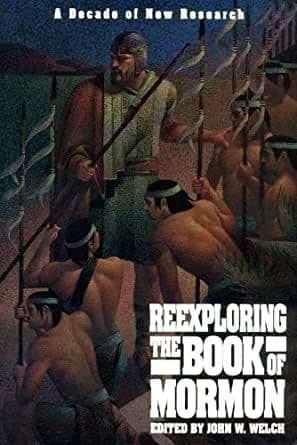Book
85 Chapters

2 Nephi 27:14 “The Lord God will proceed to bring forth the words of the book.”
Textual criticism seeks to render intelligent, scholarly judgment as to the most accurate and original form of a given text. It is an essential first step in the study of any text, including the Book of Mormon. The word “criticism” in this sense is taken from the Greek word krisis, meaning “judgment,” for a critic is one who makes careful, informed decisions or judgments.
A number of interesting things have been learned from the textual criticism of the Bible and Book of Mormon over the years, and, with the publication by F.A.R.M.S. of the Book of Mormon Critical Text, it seems a good time to provide some examples:
Although the Book of Mormon generally agrees with the King James Version (KJV) of the Bible both in its acceptable scriptural idiom of translation and in its direct quotations from Isaiah, Joseph Smith’s translation of the Isaiah texts in the Book of Mormon sometimes differs. At 2 Nephi 20:29, for example, Joseph dictated Ramath instead of the usual “Ramah” of the parallel King James Isaiah 10:29. Indeed, there is no “t” in the Hebrew text, the Greek Septuagint, or even in the Syropalestinian Aramaic version. The “t” appears, however, in the later Jewish Aramaic translation known as Targum Pseudo-Jonathan, as well as in the Christian Syriac Peshitta version. The words there are Ramata and Rameta, respectively (as is also evident in the Old Syriac Rametha for New Testament Arimathea in Matthew 27:57). Neither source was available to Joseph.
Another difference from the KJV came when Joseph was dictating from Isaiah 48:11 in 1 Nephi 20:11. Among other things, Joseph added an “it” that does not appear in the Greek or Hebrew texts. However, the “it” is in one Syriac manuscript, in one Jewish Aramaic Targum manuscript, and in a scribal correction to the large Isaiah Scroll from Qumran Cave One (the latter being the earliest Hebrew text of Isaiah).
King James “Ariel,” a poetic term for Jerusalem, is not to be found in the 2 Nephi 27:3 quotation of Isaiah 29:7. However, it is also absent from the Jewish Aramaic Targum—which replaces it with “the City.” The Book of Mormon reads Zion instead. This fits well, however, since “Mount Zion” appears at the end of the verse (Isaiah 29:8), and “Zion” and “Mount Zion” parallel each other here.
As noted long ago by the late Professor Sidney B. Sperry, the Jewish Targum and Greek Septuagint texts of Isaiah 2:16 confirm the authenticity of the reading “and upon all the ships of the sea” in 2 Nephi 12:16, even though the line is lacking in the Hebrew and King James texts.1
At 1 Nephi 7:11, the Original and Printer’s Manuscripts of the Book of Mormon, as well as the 1830 edition of the Book of Mormon, all use the word how, which was changed in the 1837 and all subsequent editions to read what. However, even the King James translators could not decide, in translating a closely similar phrase in 1 Samuel 12:24, whether how or what was a more accurate translation of the Hebrew relative particle ‘asher. They thus placed the one in the text and the other in the margin (the reasons for marginal readings are explained at length in the introduction to their 1611 edition of the King James Version). Exactly the same variant readings occur in the texts we have of the Title Page of the Book of Mormon.
There is an interesting confusion between things and words at 2 Nephi 6:8 and 33:4. While the Printer’s Manuscript reads things at both locations, all editions (except the 1830 at 2 Nephi 33:4) have changed this to read words. Either variant is a good reading, and the Hebrew word debarim is accurately translated either “things” or “words.”
The 1981 edition of the Book of Mormon has returned for the first time to the reading of the Printer’s Manuscript father (singular) at Jacob 3:5, which of course refers directly to Lehi in the preceding Jacob 2:27, 34. The plural form fathers, which had been mistakenly used in all editions since 1830, suggested that Jacob attributed a restriction on plural marriage to earlier Israelite fathers, whereas historical evidence of any such legal restriction before Lehi is lacking.
These, and many other examples, show the significant and interesting things that textual criticism can teach us about the words of the Book of Mormon.
Based on research by Robert F. Smith, September 1984. The Book of Mormon Critical Text: A Tool for Scholarly Reference, published by F.A.R.M.S. in three volumes (1984-87), has enjoyed widespread use. A further project is now being prepared by Royal Skousen, a professor in the English Department at Brigham Young University. See his article “Towards a Critical Edition of the Book of Mormon,” BYU Studies 30 (Winter 1990): 41-69. In the course of his work, Professor Skousen has newly examined, in minute detail, improved photographs of the Original Manuscript of the Book of Mormon and the actual pages of the Printer’s Manuscript. In addition, the major printed editions of the Book of Mormon have been entered into computer data bases and can be compared and analyzed now with great precision.
1. Sidney B. Sperry, Answers to Book of Mormon Questions (Salt Lake City: Bookcraft, 1967), 92-93.
Book
85 Chapters
Items in the BMC Archive are made publicly available for non-commercial, private use. Inclusion within the BMC Archive does not imply endorsement. Items do not represent the official views of The Church of Jesus Christ of Latter-day Saints or of Book of Mormon Central.